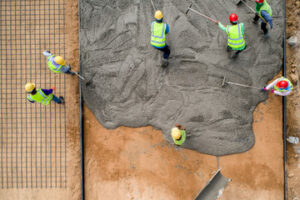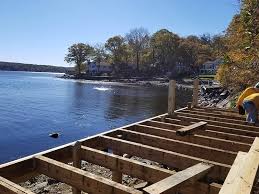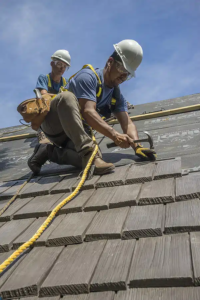Professional contractors have the knowledge and expertise to handle any concrete-related project. They also work efficiently, saving you time and money.

Look for a contractor with a diverse portfolio showcasing a variety of construction projects. Moreover, prioritize those who demonstrate a strong commitment to safety protocols and quality workmanship.
Concrete contractors are specialized professionals who work on a variety of different projects in the construction industry. They are experienced in all aspects of the concrete process, from planning and design to installation and maintenance. Their expertise ensures that concrete structures are strong and durable and built to last. Concrete Contractors work closely with architects, engineers, and project managers to turn architectural ideals into reality.
Finding the right contractor for your concrete project requires careful consideration of several key factors. These include their experience, work ethic, and pricing structure. In addition, it is important to verify their credentials and examine their past work. It is also helpful to establish clear communication and financial transparency throughout the project.
A good place to start your search for a concrete contractor is with recommendations from friends, family, and coworkers. Ask for referrals and contact them to ask questions about their experiences. Also, ask to see examples of their work. This will help you determine if their style and methods are a good fit for your project.
When hiring a concrete contractor, it is important to discuss your vision and needs with them. This will help them understand what you expect from the project and can reduce misunderstandings that can lead to costly delays. It is also a good idea to negotiate a written contract. This will clarify the price, materials to be used, and timelines. It will also protect both parties from potential legal disputes.
Make sure to ask the contractor about their experience with commercial concrete projects. They should be able to provide references from previous clients and examples of their work. You should also ask about their equipment and whether it is well maintained. This will ensure that they have the tools and resources necessary to complete the project on time and within budget.
Lastly, it is important to ensure that the contractor is licensed and insured. This will protect you in case of property damage or injuries during the project. It is also a good idea to check for certifications and affiliations with industry associations. These may indicate a dedication to quality and adherence to professional standards.
Reputation
Concrete contractors must have a good reputation in order to deliver quality work and meet deadlines. They should be able to provide references from past clients and explain how they have handled previous projects. They should also be licensed and insured to demonstrate their professionalism and commitment to the project. Choosing a contractor without a solid track record could lead to costly mistakes or delays, so it is important to do your research before hiring.
Look for reviews on online platforms and ask for referrals from past clients. Checking their websites and comparing the different contractors’ portfolios can help you make the best choice. Also, make sure to ask about their experience and expertise in handling concrete projects similar to yours. A reputable concrete contractor will be able to answer your questions and provide you with an estimate on the cost of the project.
Experienced concrete contractors know how to properly finish and cure the concrete, which allows it to stand up to the area’s unique climate conditions. They are also more likely to have a better understanding of the various types of concrete and their applications, which helps them choose the right materials for the job. Lastly, they are more familiar with building codes and regulations, which is essential for ensuring safety and compliance with local laws.
A reputable contractor should have the proper resources and equipment to handle any size commercial concrete project. In addition, they should be able to provide a detailed timeline for the project’s completion and discuss any potential delays. Checking their credentials, such as BBB accreditation and manufacturer certifications, is another way to assess their reputation and level of professionalism.
When choosing a concrete contractor, consider their years of experience in the industry and any relevant qualifications or licenses. In addition to their technical knowledge and expertise, they should be able to communicate effectively and maintain a safe working environment. You should also ask for a list of references from past clients and review their portfolios to gauge their skills, craftsmanship, and attention to detail. Lastly, evaluate the contractor’s customer service by requesting quotes and discussing any concerns or questions you may have.
Free Estimate
When hiring a concrete contractor, make sure they offer a free estimate. This will allow you to compare estimates and prices from different contractors before making a decision. It will also help you avoid unforeseen costs and surprises down the road. A professional and experienced concrete contractor will be able to provide you with an accurate and detailed estimate that will save you time and money.
Concrete Contractors are skilled professionals who specialize in bringing construction visions to life. Their work includes planning and design, interpreting blueprints and drawings, and assessing the project’s scope and requirements. They also manage the construction process, ensuring that projects are completed on time and within budget.
Before hiring a concrete contractor, ask for references from previous clients. This will give you a good idea of their past work and how well they performed on each job. Ideally, you should also visit some of their past projects to see how the finished product looks and to get an idea of what to expect when working with them.
A concrete contractor can work on a variety of projects, from building foundations to paving roads and driveways. They must be able to meet strict structural requirements and follow construction codes. They also have to ensure that their concrete work is safe and secure. This is a vital aspect of their job, as faulty concrete can cause serious safety hazards.
Once you’ve chosen a contractor, it’s important to review the details of your contract before signing. Read it carefully, and be sure to address any discrepancies before they become a problem. It’s also a good idea to ask the contractor for references, and to contact them to see how satisfied they were with their work.
Whether you’re looking for an easy way to create an estimate or want to automate the entire process, using software like Wave can save you time and effort. With a simple online form, you can quickly and easily create professional estimates and invoices for your customers. You can even set up recurring invoices and customer statements, saving you time and allowing you to focus on your business.
Customer Service
When selecting a concrete contractor, a customer service focus should be top of mind. Contractors with a reputation for providing excellent craftsmanship and friendly customer service are committed to building lasting relationships with their clients. They prioritize open communication, taking the time to listen and answer any questions or concerns. They also work hard to keep projects on schedule, minimizing disruptions to daily life.
When choosing a concrete contractor, it is important to evaluate their work experience and previous projects. Reviewing photos of their past work can help you get a sense of their quality and style, as well as their ability to handle different types of projects. Also, be sure to check their license and insurance coverage, as this will ensure that they comply with local regulations and are covered in case of any accidents or damages.
A reputable concrete contractor will offer transparent pricing and will work with you to ensure that the project is within your budget. They will also provide a detailed quote with a breakdown of costs so that you can see exactly where your money is going. They will also explain any additional fees that may be incurred, such as equipment rentals, delivery charges, environmental guidelines, and debris removal.
Moreover, a trusted concrete contractor will be able to provide you with a wide range of services to meet your needs. They will be able to repair cracks, spalling, and other damage to concrete surfaces, as well as install new concrete structures like driveways, sidewalks, and patios. In addition, they will be able to provide leveling services to lift and stabilize uneven concrete surfaces.
The best way to find a reputable concrete contractor is by asking for recommendations from friends and family members. However, you can also do a simple online search to find out more about the services offered by each company. Once you have narrowed down your options, be sure to visit their websites to read reviews and testimonials. This will give you a better idea of the quality of their work and the level of customer service they provide.







